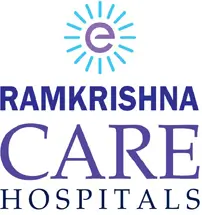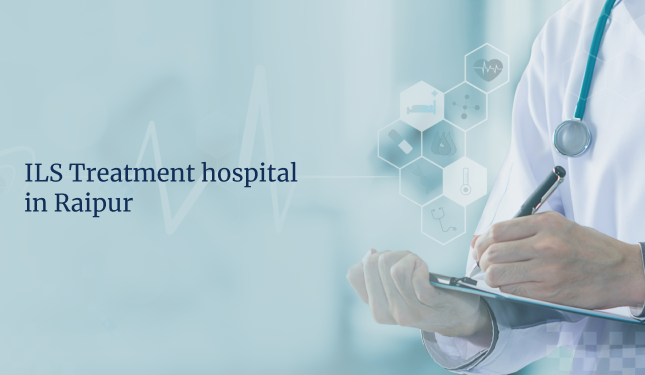Intralesional Steroid (ILS) treatment delivers medication directly into skin lesions. Doctors inject corticosteroids, mainly triamcinolone acetonide, right into affected skin areas or just beneath them. This direct method creates a medication deposit under the skin that works better than surface treatments.
Unlike topical or oral medications, ILS treatment targets specific problem areas without spreading throughout the body. In higher concentrations, the medication reaches exactly where patients need it most.
People with certain skin conditions are the best candidates for Intralesional Steroid (ILS) treatment. This targeted therapy works well for patients who haven't responded well to regular treatments like topical medications. Doctors suggest ILS treatment if a more focused approach becomes necessary.
Doctors often recommend ILS injections to patients with keloids and hypertrophic scars. These raised scars can hurt, itch, and affect appearance, which makes them perfect targets for direct steroid delivery.
Sound waves and vibration in ILS therapy reach deep relay centres in the brain for neurological applications. This creates a calm, coherent nervous system ready for learning and neuromodulation, making it perfect for conditions that need neural pathway retraining.
The treatment's excellent safety record and high success rates make ILS an outstanding choice if you want effective solutions without disrupting your daily life.
Alopecia areata remains one of the main conditions that doctors treat with ILS therapy. The intralesional steroid injections reduce inflammation and wake up sleeping hair follicles in bald patches. The scalp's affected areas start growing hair again.
ILS treatment proves remarkably effective for several skin conditions:
- Keloids and Hypertrophic Scars: ILS injections help flatten raised scars by breaking down excess collagen
- Lichen Simplex Chronicus: Reduces inflammation and itching in thickened skin patches
- Cystic Acne: Provides rapid resolution of painful, deep cysts
- Psoriasis: Treats localised plaques resistant to topical therapies
- Vitiligo: Stimulates repigmentation in small, limited patches
- Hemangiomas: Helps shrink these benign vascular tumours
- Granuloma Annulare: Addresses persistent granulomatous skin conditions
- Hypertrophic nail lichen planus: Treats thick, misshapen nails
ILS treatment's amazing benefits go way beyond how it's applied, giving patients better results with minimal discomfort.
ILS treatment's benefits make it a better choice than traditional approaches:
- Minimally invasive procedure with little risk of side effects, requiring no anaesthesia in most cases
- Zero recovery downtime allows you to return to normal activities immediately, unlike traditional surgeries requiring 2-3 weeks of recovery.
- Exceptional precision targets specific problem areas while leaving surrounding tissue unharmed.
- Faster action and longer duration of effects due to the depot/reservoir effect in the tissue
- Reduced need for long-term topical therapy and better patient compliance
- Budget-friendly and available treatment option
ILS is one of the most common procedures to manage large numbers of patients efficiently on an outpatient basis. The treatment works even better when combined with other methods, such as cryotherapy for keloids, creating a collaborative effort.
A standardised protocol guides the Intralesional Steroid (ILS) treatment, which delivers medication directly to the affected area. The doctor starts by cleaning the injection site with alcohol or an antiseptic solution to reduce the risk of infection.
The dermatologist evaluates the lesion before injection to select the right corticosteroid concentration and volume.
The medication delivery into the skin lesion happens through a fine needle. The procedure has these steps:
- Cleansing the area with an antiseptic solution
- Administering the injection intradermally, not subcutaneously
- Delivering approximately 0.1–0.2 ml per square centimetre of involved skin
- Limiting total dose to less than 1–2 ml per session
The needle must go intradermal rather than subcutaneous to prevent skin depression. Multiple small injections help stimulate hair regrowth throughout the affected patch when treating conditions like alopecia areata.
Most patients need repeated injections every 3–6 weeks. The specific condition, lesion location, patient age, and response to previous injections determine the total number of treatments.
Patients can resume their normal activities right after the procedure since it requires minimal recovery time. However, the injection site should not be touched or washed for several hours.
The dermatologist tracks progress and adjusts the dosage or frequency based on patient response. Persistent conditions like keloids or extensive alopecia often need multiple sessions for complete symptom resolution.
Proper aftercare after ILS treatment is vital to getting the best results and avoiding complications. After the injection, your doctor will put a small dressing over the treated area. You can remove this after a few hours. This protects the injection site and lets it start healing.
Keeping the injection site clean matters a lot. To prevent infection, wash the treatment area gently with mild soap and water. Don't touch, scratch, or pick at the treated area, as this could cause irritation or let bacteria in.
You can get back to your regular activities soon after ILS treatment. Many patients start walking right after the procedure and return to work within a few days.
These care instructions will help you get the best results:
- Keep the injection site clean and dry
- Use moisturiser if you notice dryness, but skip heavy creams
- Stay out of direct sunlight to avoid pigmentation changes
- Show up for all your follow-up appointments
- Take your medications, including antibiotics, exactly as prescribed
- Look out for signs of infection or unusual healing
Your clinician will schedule follow-up visits 1–3 weeks after treatment to check your progress and ensure your healing is going well. Some conditions require more sessions spaced several weeks apart.
Call your doctor right away if you notice excessive swelling, redness, increasing pain, or strange discharge from the injection site. These signs might indicate complications that need quick treatment.
Patients with hair conditions getting ILS treatment should avoid hair products until their doctor gives the green light. Patients with skin conditions need to protect the treated area from anything that might irritate it until healing finishes.
Ramkrishna CARE Hospitals is a leading healthcare centre in Raipur that specialises in ILS treatments. Its eco-friendly environment and exceptional nursing care benefit patients.
The hospital's experienced doctors and nursing staff deliver high-quality ILS treatments for alopecia, skin lesions, and dermatological conditions. Doctors follow international treatment protocols and use minimally invasive procedures effectively.
Patients seeking ILS treatment for hair conditions or skin treatments find a comfortable environment focused on their needs. The hospital maintains strict infection control protocols, regular sanitisation, and ongoing staff training to ensure patient safety during ILS procedures.
The hospital serves Chhattisgarh and neighbouring states by providing quality healthcare at affordable rates. Its dedication to incorporating new healthcare ideas makes it an excellent choice for patients who need specialised treatments like ILS injections for alopecia and other conditions requiring intralesional steroid therapy.

